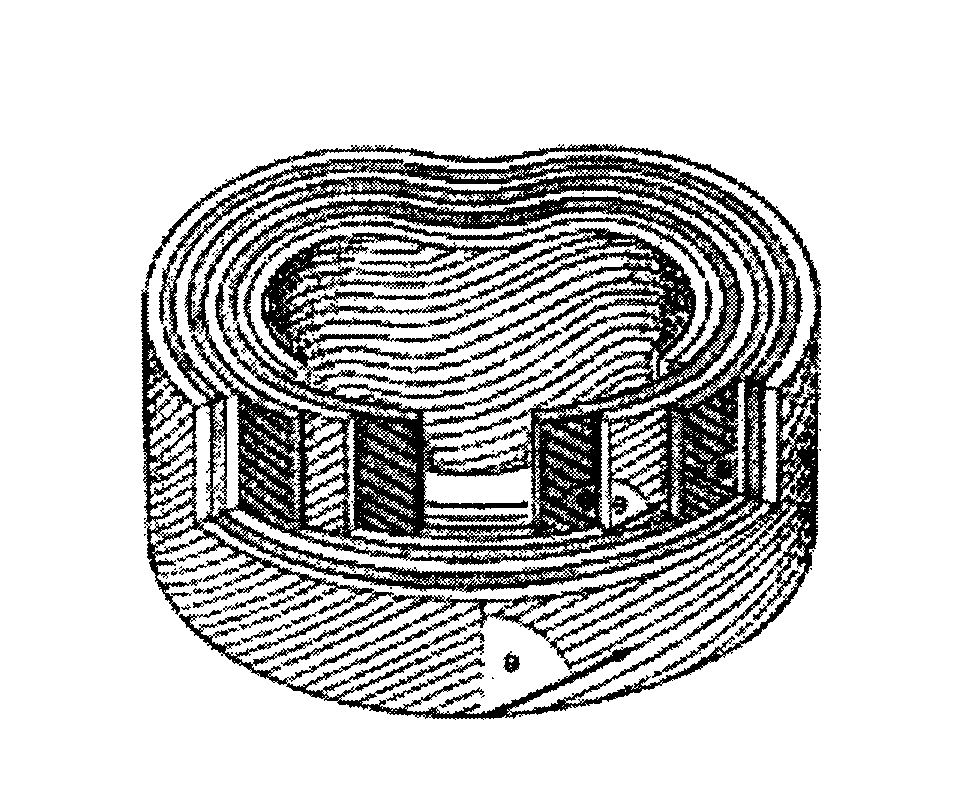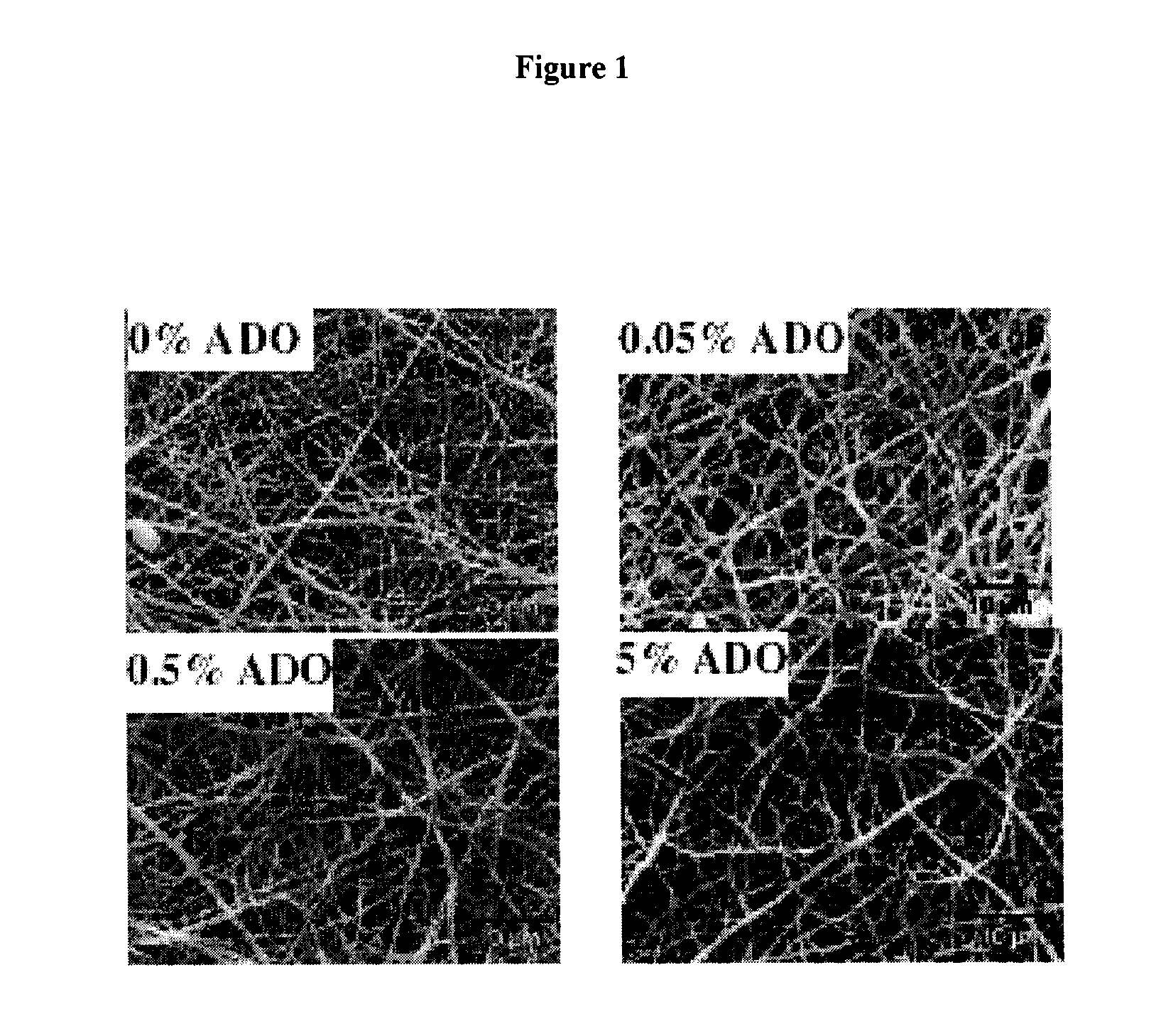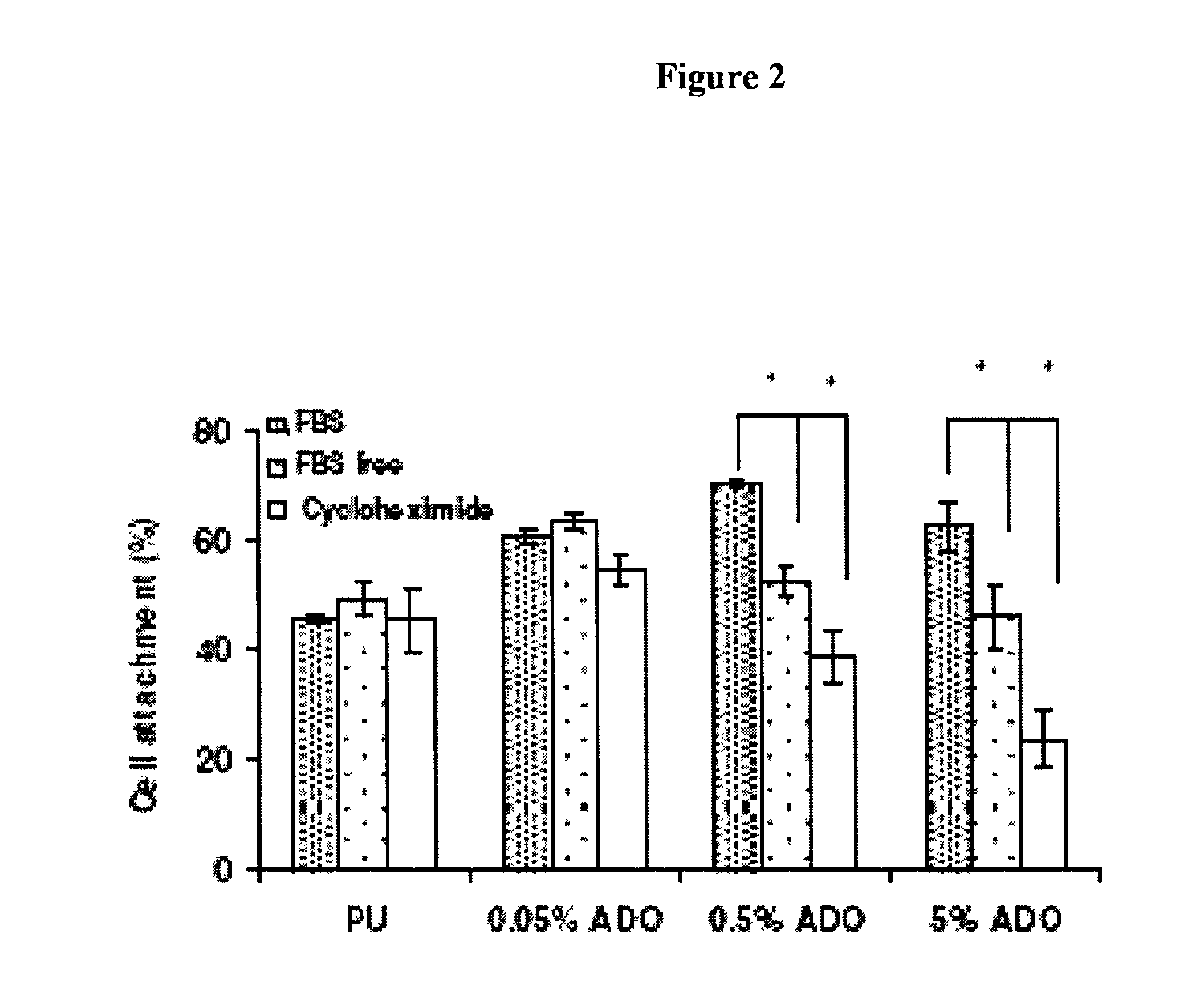Fibrous scaffold for use in soft tissue engineering
a soft tissue engineering and fibrous technology, applied in the field of fibrous scaffolds, can solve the problems of reduced flexibility, inability to optimally treat chronic back pain, and inability to meet the needs of patients, and achieve the effect of reducing the risk of degenerative changes in adjacent segments, and improving the quality of li
- Summary
- Abstract
- Description
- Claims
- Application Information
AI Technical Summary
Benefits of technology
Problems solved by technology
Method used
Image
Examples
example 1
[0110]Degenerative disc disease is associated with the development of low back pain. Using annulus fibrosus (AF) tissue formed in vitro on polymeric scaffolds to replace damaged native tissue is a novel approach to the treatment of this disease. In this study, a series of biodegradable polycarbonate urethane nano-fibres with controlled change in surface energy were generated to assess their use as scaffolds for AF tissue formation. Polycarbonate urethane (PU) was chosen for its biodegradability and biocompatibility.
Materials and Methods
[0111]Polymer synthesis: A novel anionic divinyl oligomer (ADO) bearing —COOH group was synthesized through the reaction of polytetramethylene oxide, hydroxyethylmethacrylate and lysine diisocyanate in dimethyl acetamide (DMAC) solvent overnight at 50-60° C. The ester groups on the lysine were hydrolyzed to carboxylic acid groups. PU was used as the base polymer for scaffold fabrication, and it was synthesized as described previously [Tang Y W, et al....
example 2
[0113]AF cells were isolated from bovine caudal discs, seeded (0.5×106) onto fibrous scaffolds, and cultured in Hams F12 with 20% FBS for 7 days. Accumulation of collagen content over 7 days of culture was determined by performing a hydroxyproline assay. Collagen synthesis was quantified by incubating the cells with [3H]-proline (2 μCi / sample) for 24 hours on day 7 of culture and determining the amount of radioactivity incorporated. The results showed that significantly more collagen was produced and accumulated in a week by cells grown on polyurethane scaffolds containing 0.5 wt % and 5 wt % oligomer (FIG. 6A), while on day 7 the newly synthesized and retained collagen on polyurethane scaffold with 0.5 wt % oligomer was nearly twice as much as that on the scaffold containing 5 wt % oligomer (FIG. 6B). An SEM image (FIG. 6C) taken on a cross-section showed that there were a few layers of tissue formed on the scaffold containing 0.5 wt % oligomer.
example 3
Synthesis of ADO and Scaffolds
[0114]Synthesis of anionic dihydroxyl oligomer (ADO) An anionic dihydroxyl oligomer was synthesized using lysine diisocyanate (LDI) as a coupling agent to combine polybutylene glycol (PTMO, Aldrich) with hydroxyethylmethacrylate (HEMA; Aldrich, Milwaukee, Wis.). Before synthesis, LDI and HEMA were distilled under vacuum whereas PTMO was degassed overnight under vacuum at 40° C. The PTMO was dissolved in DMAC and reacted with LDI in a 3:4 molar ratio with 0.01 mL of DBDA at 65° C. for 4 hrs. The concentration of total reactants in the first step was 20% (w / v). This was then followed by the addition of distilled HEMA along with 0.01 mL of DBDA. HEMA was used here as a temporary blocking group during the termination of the oligomer synthesis. This ending step progressed for 4 h in a temperature range of 60-70° C. The final mixture was left to stir overnight between 50-60° C. The oligomeric product was precipitated into ether / distilled water solution (30 / 70...
PUM
| Property | Measurement | Unit |
|---|---|---|
| thickness | aaaaa | aaaaa |
| angle | aaaaa | aaaaa |
| contact angle | aaaaa | aaaaa |
Abstract
Description
Claims
Application Information
 Login to View More
Login to View More - R&D
- Intellectual Property
- Life Sciences
- Materials
- Tech Scout
- Unparalleled Data Quality
- Higher Quality Content
- 60% Fewer Hallucinations
Browse by: Latest US Patents, China's latest patents, Technical Efficacy Thesaurus, Application Domain, Technology Topic, Popular Technical Reports.
© 2025 PatSnap. All rights reserved.Legal|Privacy policy|Modern Slavery Act Transparency Statement|Sitemap|About US| Contact US: help@patsnap.com



